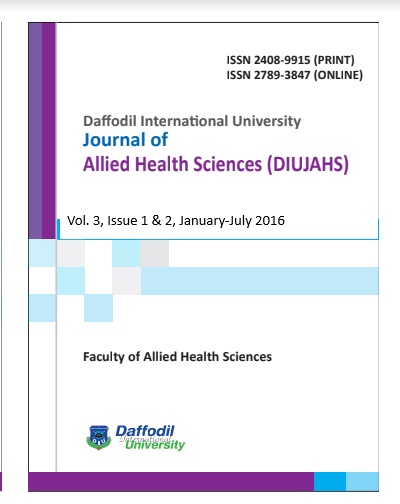A Survey on Prescription Pattern for Patient of Kidney Diseases
DOI:
https://doi.org/10.36481/diuhls.v03i1-2.s6ppgy18Abstract
Kidney disease is a general term for any damage that reduces the functioning of the kidney. It can also cause other problems that can harm our health. So. The objective of this study is to explore the pattern and practice of medicine use among the patients of kidney diseases to manage these diseases. To perform this study a survey was conducted among the kidney patients of six randomly selected private hospitals of Dhaka & Sirajganj city of Bangladesh. A total of 82 prescriptions were collected within March 2016 to April 2016, of which 60 were selected for the study based on their diagnostic findings of kidney diseases. All the prescription were prescribed by kidney specialist reflecting the detailed information of diagnostic findings, medications and their doses and dosage forms. Among 60 patients 36.7% were female patient and the rest 63.33% were male; both were in between 26-67 years. In this prescription the type of kidney disease was found like, Kidney failure, Kidney cancer, Kidney stone, Pyelonephritis, Glomerulonephritis, Acute renal failure, Chronic renal failure, Diabetic nephropathy, Nephrogenic diabetes insipidus, End stage renal disease (ESRD), Hypertensive nephropathy etc. The study shows that acute kidney failure was found to be most common (23.5%) and kidney cancer and End stage renal disease were found in a lowest number of patient (1.7%). All of the prescriptions contain multiple drugs. According to these prescriptions most commonly prescribed drugs were Furosemide (40%) and Amlodipine (40%) whereas Atenolol (15%) and Prednisolone (15%) were used in less number of prescription. The study was done on a limited scale, only 82 prescriptions were collected but additionally this can be done on a large scale to assess the scenario of kidney diseases of overall population of Bangladesh. Furthermore it is necessary to monitor the use of medication and its correlation with clinical outcome and quality of life to ensure the optimal use of health care resources.

